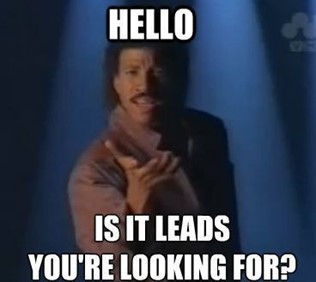
Community management is as vital as customer service. Here’s why.
Sales and marketing have long gone hand in hand.
On the marketing side, we’re always looking for ways to improve customer experience and guide audiences down the funnel. Community management (specifically on social media) is one of our secret weapons.
What is community management? 👉 We define it as the ongoing process of building a strong brand community of enthusiasts, potential customers, employees and partners through reviews, comments and interactions. Essentially, we like to think of it as “digital customer service.”
Community management is also a powerful, often underestimated lead generation tool. According to Sales Force, in the past three years, companies have seen a 66% increase in service requests from digital channels. The pandemic has only increased this rate.

More and more, users are reaching out on social media to get their questions answered. Whether they are looking to set up a product demo or troubleshoot an issue, the most detrimental thing your business can do is ignore these requests.
Remember when we discussed the importance of building brand communities? Allocating time and budget toward community management on social media is a crucial way to build trust among your audience and avoid losing potential customers.
Our team likes to have a positive outlook on community management. Not every aspect of customer service is necessarily fun, but stay with me: aim to shift your outlook of community management from mundanely typing responses to actively converting excited customers.
This will help your hard work pay off.
Here are our tips for effective community management:
- Create a community management guide complete with FAQs, escalation plans and appropriate contact information. This will keep your team organized and able to efficiently answer questions.
- Start a weekend rotation for your team. And stick to it! Our social media team knows the importance of answering comments in a timely fashion. We also know the importance of logging off to avoid burnout. Working together helps give everyone the opportunity to truly disconnect.
- Respond to reviews, both positive and negative. Don’t overlook rating platforms like Glassdoor, Google My Business or Yelp. Thanking users for taking the time to leave a review and ensuring that their feedback is valued goes a lonnnnng way.
- Watch for user-generated content (UGC). When customers tag your company in a photo or leave a positive comment, make sure to interact with it. This is a perfect way to grow your community and even find influencers.
- Make an organized list of digital platforms to monitor. Is your business active on YouTube, Facebook, Indeed, and Google My Business? We recommend checking them each at least daily. Bonus tip: Ensure login information is organized so that if the designated community manager is out, a backup can seamlessly jump in.
- Don’t be too hard on yourself. Quality responses are far better for your audience than quick ones. Although Facebook deems your page “Very Responsive” when you answer DMs within 15 minutes, it’s more than OK if your business page doesn’t quite hit that mark. If customers are heard and issues are resolved, you’re doing your part to build the community.
Need extra hands to support your community management execution? Contact us! 💁 We’d love to hear about your business goals.

Libby Bahr
Libby joined Flint Group as a social media and public relations intern in 2018. She has experience in content creation, social media implementation and copywriting for clients across various industries, including professional services, manufacturing and retail. She was promoted to join the social media team full-time upon her graduation from NDSU in 2020. Through her range of experience, Libby has developed expertise in social media tactics and copywriting. She plays a key part in implementing and coordinating Flint Group's social media services.
